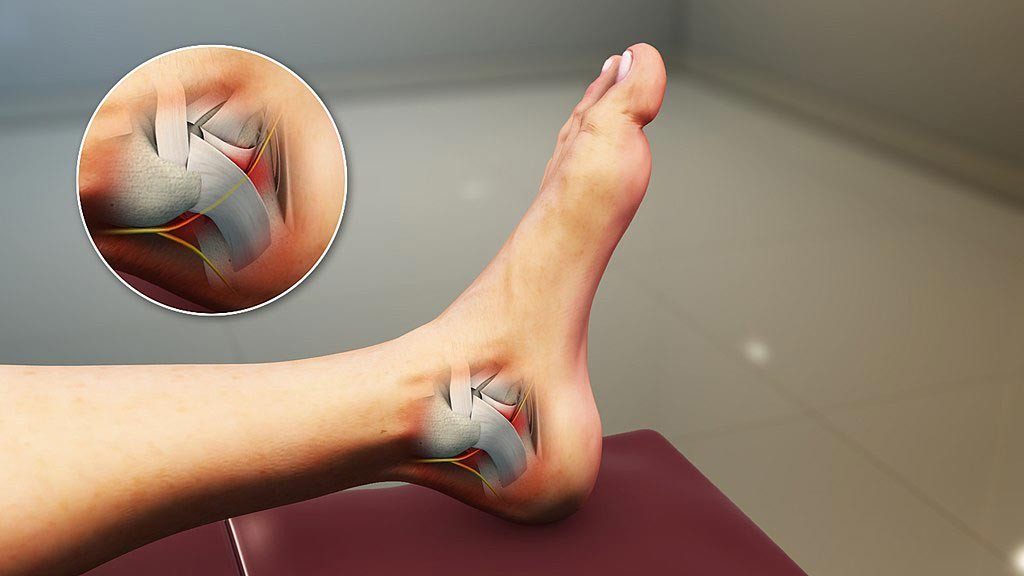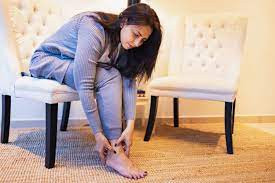Definition
Peroneal nerve palsy is a condition where an individual is unable to lift the front part of their foot. This symptom occurs due to a problem with the peroneal nerve, which innervates the front of the lower leg and the top of the foot. This nerve not only provides sensation but also controls the muscles that lift the ankle and toes. When the peroneal nerve is disrupted, it can cause numbness, pain, and weakness in the foot. Patients often appear to drag the front of their feet when walking.
This nerve dysfunction can lead to disability, with symptoms ranging from mild sensory loss and pain to drop foot and severe difficulties in movement. The condition can be acute or chronic.
Causes
There are many causes, both injury-related and other diseases, that can lead to peroneal nerve palsy. Muscle weakness can occur due to compression of the peroneal nerve in the leg, which can be caused by knee dislocation, overly tight casts or braces, fractures of the fibula in the lower leg, post-knee or hip replacement surgery, habitual leg crossing, and prolonged bed rest. Fractures of the tibia and/or fibula in the lower leg are estimated to cause 1-2% of peroneal nerve injuries. These injuries are particularly common in athletes, such as soccer or football players, often associated with knee dislocations or ligament injuries, which eventually also injure the peroneal nerve.
In addition to compression of the peroneal nerve, spinal nerve compression can also cause palsy. Systemic diseases like diabetes mellitus, Charcot-Marie-Tooth disease, which affects motor nerves, and inflammatory diseases, all can lead to neuropathy or damage to the peroneal nerve, resulting in compression and injury to the nerve.
Risk factor
Peroneal nerve palsy can result from activities that put pressure on the peroneal nerve. Several risk factors can increase the incidence of this disorder, such as prolonged kneeling, jobs that require excessive squatting and kneeling, excessive unconscious leg crossing, and the use of leg casts due to injury which can compress the peroneal nerve as they cover the ankle area to below the knee.
Athletes and young adults are also at risk of peroneal nerve injuries. Soccer players, in particular, are prone to peroneal nerve injuries. Motor vehicle accidents are also a concern because people who experience knee dislocations report 16-40% incidence of peroneal nerve palsy. Obese individuals can also experience knee dislocation during their daily activities.
Symptoms
Drop foot is the most prominent symptom, where the patient finds it difficult to lift the front part of their foot, causing them to appear to drag the front of their foot when walking. A steppage gait, where the upper part of the leg is lifted higher as if climbing stairs to help lift the front foot, may appear. Sometimes, this symptom can be accompanied by a loss of sensory sensation, such as pain or temperature sensation. Numbness or tingling may occur on the skin around the foot or big toe due to the repeated steppage gait. Drop foot symptoms can appear within a few days to a few weeks.
The location of the injury can affect the clinical symptoms. If the superficial peroneal nerve is affected, usually numbness or abnormal sensations will appear on the front of the lower leg and the top of the foot.
Diagnosis
To diagnose peroneal nerve palsy, an in-depth interview (anamnesis) about the symptoms experienced, patient habits and possible triggering factors can be conducted. A physical examination is necessary to observe how the patient walks, whether they drag the front of their foot or not. A sensory examination is performed to see if the patient feels numb in the foot, and to check if sensory function is normal or not. Usually, the doctor will also ask about the patient's history of nerve or muscle diseases.
If the results of anamnesis and physical examination conducted by the doctor point towards a diagnosis of peroneal nerve palsy, imaging tests can be conducted to support the diagnosis. X-ray examinations can be performed to check the condition of the soft tissues in the patient's foot and detect any lesions on the bones causing the symptoms. This can be done as an initial examination. Ultrasound (USG) is performed to see if there is swelling in the nerve due to compression.
CT (Computed Tomography) scans can be done to further evaluate bone disorders. MRI (Magnetic Resonance Imaging) can help the doctor to see if there are any lesions on the soft tissues. Lesions can be one of the causes of pressure on the peroneal nerve, causing drop foot symptoms. Electromyography can also be performed to measure the electrical activity in the patient's nerves and muscles.
Management
Treatment of the disease is usually tailored to the underlying cause. Some measures commonly taken to address the disorder include the use of braces and splints on the patient's ankle and foot to keep the foot posture normal. Physical therapy, such as physical activities or exercises, is also beneficial to strengthen the patient's leg muscles and minimize the risk of a stiff heel due to a drop foot.
Nerve stimulation, which is an electrical stimulation technique, can also be a treatment option to improve the affected peroneal nerve. Surgery is performed if the use of braces and splints, physical therapy, and nerve stimulation are not very effective. Surgical procedures, such as bone or nerve surgery, depend on the cause of the foot drop itself. The purpose of surgery is to decompress the nerve causing the symptoms or to move the tendon from a stronger leg muscle to the muscle that pulls the ankle upwards.
Complications
Some complications that may occur include frequent falls, ulcer formation, nerve damage as a result of long-term use of braces, and skin abrasions (blisters) from the use of braces. These complications usually occur due to improper treatment or the effects of the treatment method itself.
Prevention
Peroneal nerve palsy can be prevented by avoiding its triggering factors, such as avoiding habits of prolonged kneeling and sitting with crossed legs. For those with peroneal nerve palsy, to prevent recurrent injuries, it is recommended to tidy up items scattered on the floor to avoid tripping and falling while walking, ensure proper lighting in frequently used rooms to avoid tripping, and keep cables away from the floor to prevent tripping. Use protective gear while exercising or driving to avoid severe complications in case of injury.
When to see a doctor?
It is advisable to see a doctor immediately when experiencing difficulty lifting the front part of the foot, as the condition may be suspected to lead to foot drop. Especially when symptoms point to the patient dragging the front part of the foot because they are unable to lift it, see a doctor immediately.
Looking for more information about other diseases? Click here!
- dr Hanifa Rahma
Johns Hopkins Medicine. Peroneal Nerve Injury. Available from: https://www.hopkinsmedicine.org/health/conditions-and-diseases/peroneal-nerve-injury
Nerve Clinic. Common peroneal nerve palsy. Available from: https://nerveclinic.co.uk/nerve-conditions/lower-limb/common-peroneal-nerve-palsy
Morris T, Keenan M, Baldwin K (2015). Peroneal nerve palsy. Current Orthopaedic Practice. Available from: https://journals.lww.com/c-orthopaedicpractice/Abstract/2015/03000/Peroneal_nerve_palsy.13.aspx
Lezzak B, Massel D, Varacallo M (2021). Peroneal Nerve Injury. Available from: https://www.ncbi.nlm.nih.gov/books/NBK549859/












